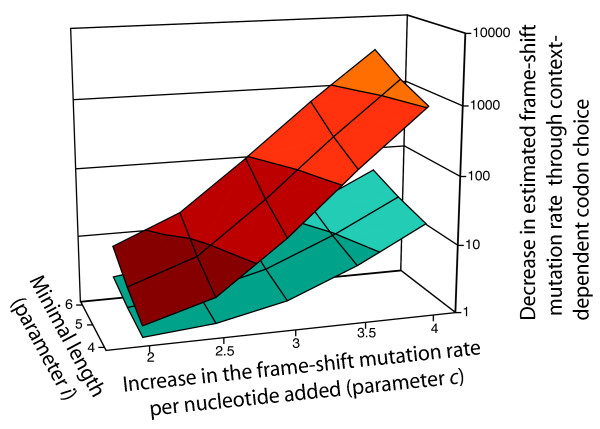Figure 4.
Context-dependent codon choice leads to a strong decrease in the estimated frame-shift mutation rate in mononucleotide repeats in protein-coding genes in M. tuberculosis (upper area, red), and to a weaker decrease in E. coli (lower area, blue). We estimated the frame-shift mutation rate in the real genomes, and in randomized genomes without context-dependent codon choice. The ratio between these two values is a measure for the degree by which context-dependent codon choice stabilizes the genome, and is displayed on the z-axis. Increasing lightness of the colors indicate increasing values on the z-axis. This ratio was calculated for different combinations of two biological parameters – the increase in the frame-shift mutation rate per nucleotide added to a mononucleotide repeat (parameter c, x-axis), and the minimal length for a mononucleotide repeat to exhibit a significant frame-shift mutation rate (parameter i, y-axis; see Methods). Published data suggest that in MMR-deficient bacteria c is close to 3 and i is about 4. For this combination, context-dependent codon choice leads to a decrease in the frame-shift mutation rate in mononucleotide repeats of a factor of about 20 in M. tuberculosis and of a factor of 3 in E. coli.

